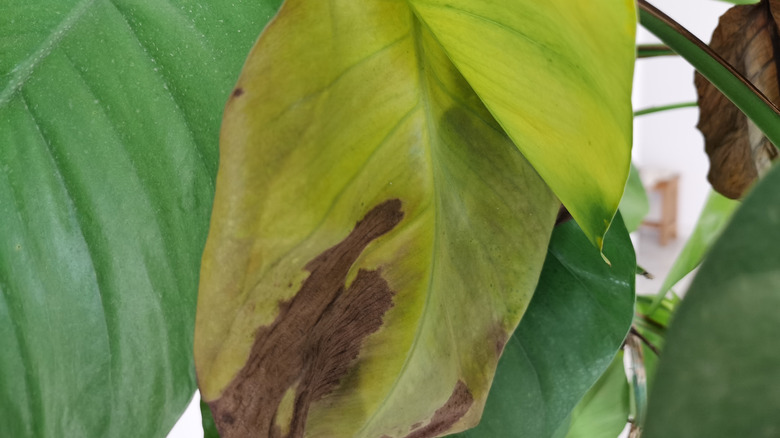The Silent Killer That Is Ruining Your Pothos Plants
We may receive a commission on purchases made from links.
Pothos plants (Epipremnum aureum) are a super popular choice for nature lovers thanks to their heart-shaped leaves, climbing stems, and beautiful white-green colors. Due to the fact that these attractive plants typically only thrive outdoors in USDA hardiness zones 10 to 12, they are often grown as houseplants. This is also a good way to keep their climbing stems in check and easily monitor their well-being. However, there are a few problems that owners of these plants tend to face, such as yellowed or crumpled leaves, drooping stems, and even the appearance of small insects like spider mites. These concerns typically arise from common watering mistakes or a lack of sunlight.
But there may be one sneaky and less well-known issue negatively affecting your pothos. This plant is sensitive to temperature changes and thrives best in areas that mimic its warm native environment, typically around 65 to 80 degrees Fahrenheit. So if there are any sudden alterations to the temperature — such as from a nearby window, drafty area, or vent — it can shock the plant and result in black spots or even permanent damage. This can ruin the appearance of your plant's beautiful foliage, or worse, impact its ability to thrive. Luckily, if you want to improve the look of your pothos plants and protect them from harmful drafts, the solution is simple: Move them to an area in your home with a more stable temperature.
How to protect your pothos from temperature changes
The main thing you'll want to consider when choosing the right location for your pothos is avoiding the cold. Since these are tropical plants, cold temperatures could cause permanent or fatal harm, even if the cooler air is infrequent. Avoid placing the plants in areas of your home that may get cold drafts such as near windows, particularly older ones that have gaps where outside air can leak in. If these are the only places where you can fit your pothos, consider using caulk or this window insulation kit from Amazon to insulate the area and prevent cold air disrupting your plant's health.
Frigid air isn't the only thing that can damage your plant's leaves. Pothos plants are used to relatively stable temperatures, so sudden or harsh heat can actually be an issue, too. Localized heat sources like nearby space heaters will especially damage the leaves closest to them. If your pothos is situated near a heating vent, you may want to think about moving it to a different location, at least while the vents are in use. The ideal way to make your pothos plants look fuller is to place them somewhere warm but not too hot that receives filtered sunlight so as not to burn the leaves. Remember, too, that pothos can be toxic if ingested in large amounts, so it's best to find a site that's out of reach of pets and children.

